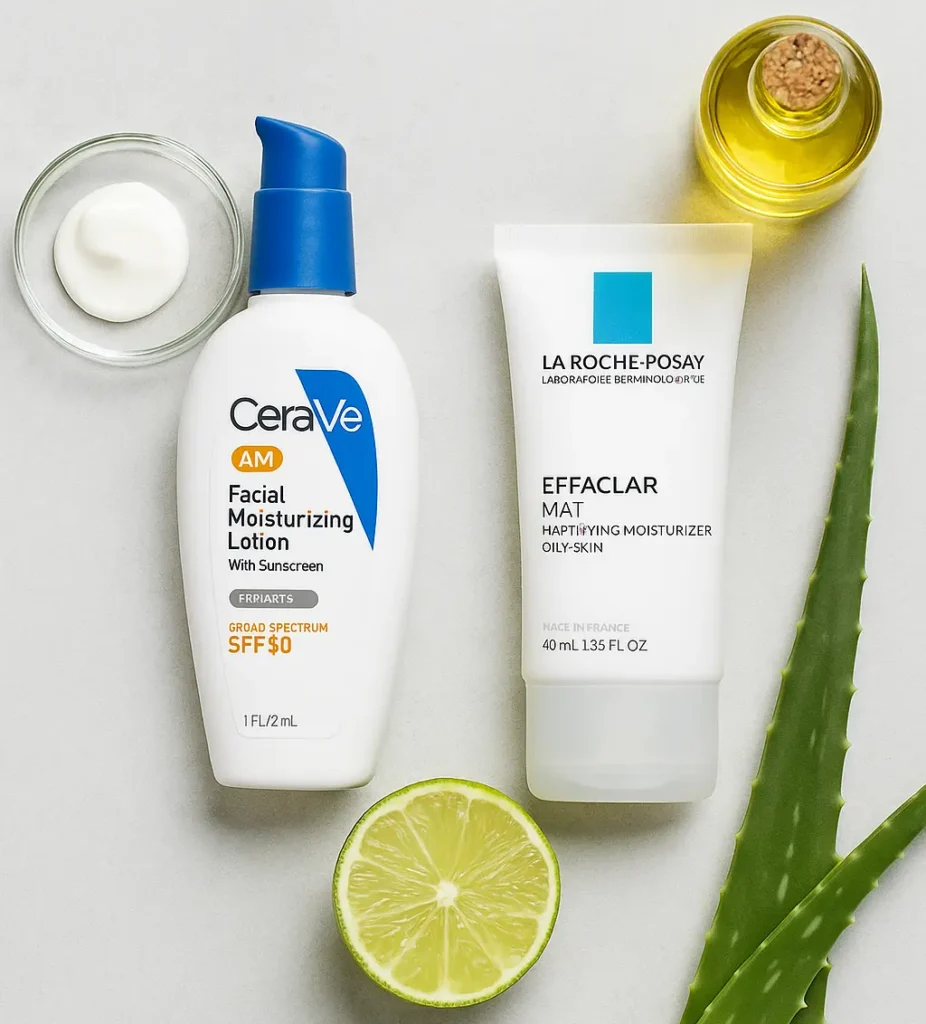When summer hits and temperatures soar, managing oily skin can feel like a never-ending battle. You wash your face, and two hours later, you’re glowing — and not in the dewy, radiant way. Oily skin in summer isn’t just about shine; it can come with breakouts, clogged pores, inflammation, and makeup meltdowns. That’s where a well-formulated, oil-controlling moisturizer comes into play.
In this ultimate 2025 face-off, we’re comparing two top-rated moisturizers beloved by dermatologists and skincare junkies alike: CeraVe AM Facial Moisturizing Lotion SPF 30 and La Roche-Posay Effaclar Mat Daily Moisturizer.
Why You Still Need a Moisturizer in the Summer (Especially With Oily Skin)
There’s a big myth out there — one that needs to be busted ASAP: “Oily skin doesn’t need moisturizer.”
Wrong. Here’s why:
🔹 Sebum ≠ Hydration
Sebum is your skin’s natural oil, but it doesn’t actually hydrate your skin. In fact, many people with oily skin are also dehydrated, which triggers the skin to produce even more oil.
🔹 Moisturizers Can Reduce Oil Production
Counterintuitive? Maybe. But when your skin is properly moisturized, it doesn’t need to compensate by pumping out excess oil. The result? Less shine, fewer breakouts, and better skin balance.
🔹 They Support the Skin Barrier
Lightweight moisturizers with ceramides, niacinamide, hyaluronic acid, and antioxidants help strengthen your skin barrier, making your skin more resilient to sun, pollution, sweat, and acne-causing bacteria.
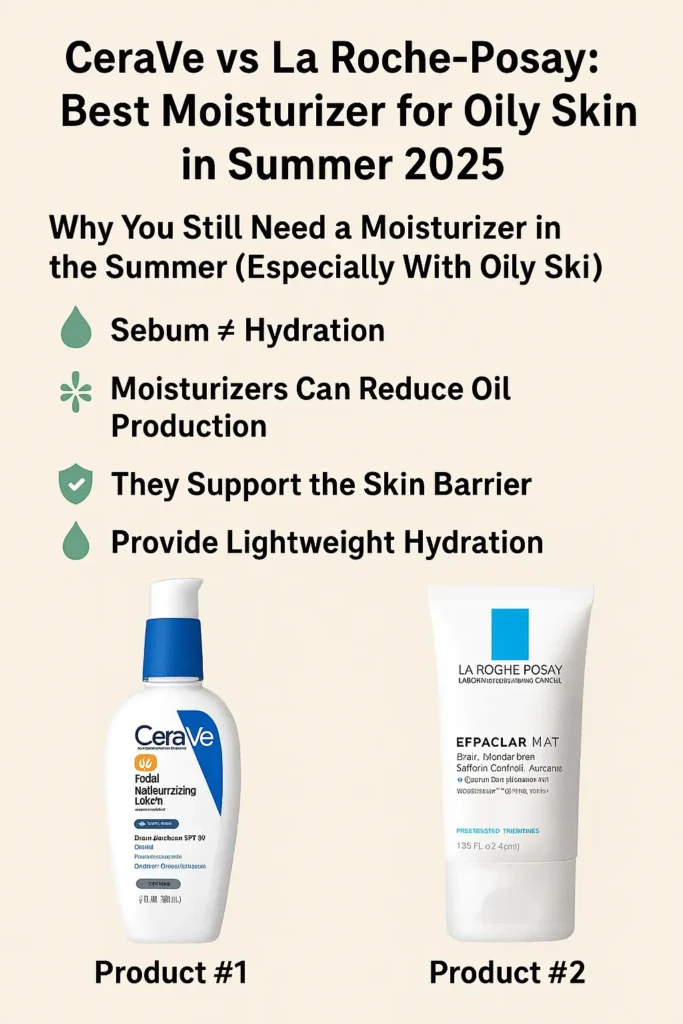
Product #1: CeraVe AM Facial Moisturizing Lotion with SPF 30
Overview:
This multitasking product is part of CeraVe’s wildly popular dermatologist-developed lineup. It’s designed for normal to oily skin types and offers hydration + sun protection in a single step.
✅ Key Ingredients:
- Niacinamide: Regulates sebum, reduces redness, and calms inflammation
- Ceramides: Restores and protects the skin barrier
- Hyaluronic Acid: Attracts and retains moisture without heaviness
- Zinc Oxide & Octinoxate: Mineral + chemical filters for broad-spectrum SPF 30
💡 Real User Insights (2025 Reviews):
- “It’s my go-to daily moisturizer. I love that it has SPF and doesn’t break me out.”
- “It’s slightly thick at first, but absorbs quickly. Great under makeup.”
- “Perfect for my oily-combo skin in the morning. Doesn’t pill with foundation.”
👎 Downsides:
- Texture might feel too creamy in very humid climates like Florida or Texas.
- Can leave a slight white cast on deeper skin tones.
- SPF filters include chemical components, which some sensitive skin types may not tolerate.
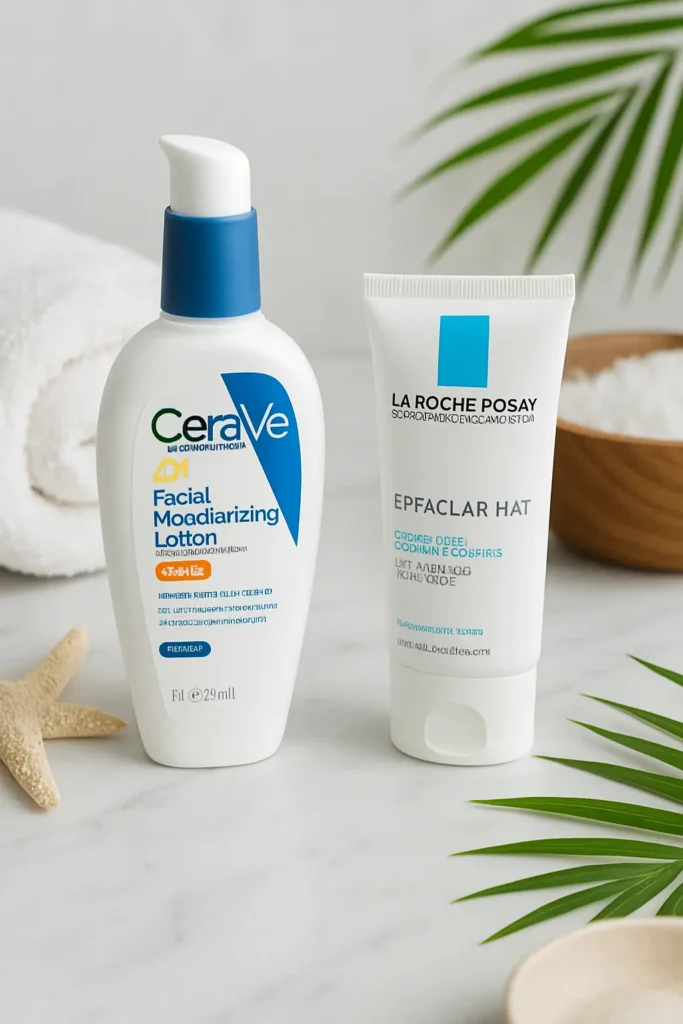
Product #2: La Roche-Posay Effaclar Mat Daily Moisturizer
Overview:
Part of the Effaclar line formulated specifically for oily and acne-prone skin, this mattifying moisturizer delivers oil-control and pore-minimizing benefits without clogging pores.
✅ Key Ingredients:
- Sebulyse Technology: A proprietary blend that targets excess oil at the source
- Micro-exfoliating LHA (Lipo Hydroxy Acid): Gently unclogs pores and refines skin texture
- Silica + Perlite: Absorbs excess oil, provides a long-lasting matte finish
- Glycerin: Light hydration without heaviness
💡 Real User Insights (2025 Reviews):
- “My T-zone stays matte for HOURS. Total game changer.”
- “Wish it had SPF, but I layer it under La Roche’s Anthelios sunscreen and it works perfectly.”
- “Fragrance is a little strong at first, but no irritation or breakouts.”
👎 Downsides:
- No SPF — you need a separate sunscreen
- Contains fragrance — not ideal for highly sensitive skin
- Pricier than CeraVe, especially for daily use
Deep-Dive: Ingredient Comparison
| Ingredient Type | CeraVe | La Roche-Posay |
|---|---|---|
| Hydration Boosters | Hyaluronic Acid, Glycerin | Glycerin |
| Barrier Support | Ceramides 1, 3, 6-II | None |
| Oil-Control Actives | Niacinamide | LHA, Sebulyse, Silica |
| Sun Protection | SPF 30 (Zinc + chemical) | ❌ None |
| Skin Smoothing | Niacinamide | LHA |
| Texture Enhancers | Lightweight lotion | Matte gel-cream |
| Comedogenic? | No | No |
| Fragrance-Free? | Yes | No |
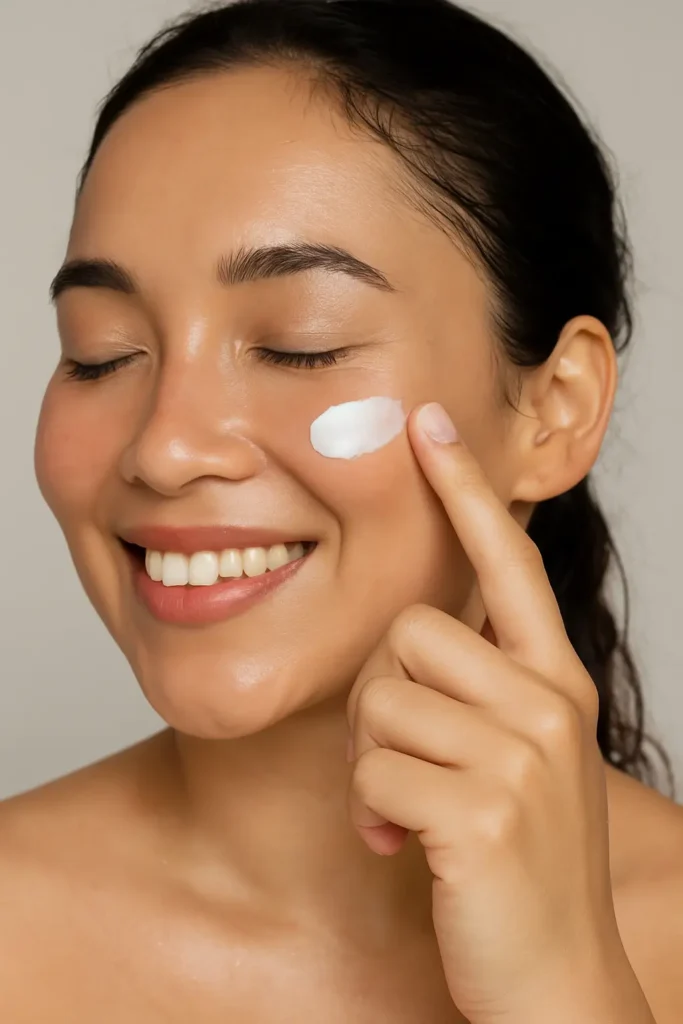
Which One Works Better for Acne-Prone Skin?
Let’s be real — if you’re oily, chances are you’ve struggled with breakouts. Both products are non-comedogenic, but La Roche-Posay has a slight edge here thanks to:
- LHA (Lipo Hydroxy Acid): A derivative of salicylic acid that exfoliates inside pores
- Mattifying agents (Silica + Sebulyse) that help minimize the greasy film that traps bacteria
That said, CeraVe’s niacinamide is also highly effective for calming active breakouts and fading post-acne marks. For mild to moderate acne, both can work — but if your main concern is excess sebum and blackheads, Effaclar Mat may perform better.
How They Perform Under Makeup
One of the biggest questions for oily-skin users is: “Will this make my makeup slide off?”
- CeraVe: Smooth under foundation, but in high heat it may cause slight shine after 3-4 hours. Best for tinted moisturizers or lighter base days.
- La Roche-Posay: Amazing makeup primer effect. Keeps T-zone matte, reduces powder touch-ups.
Verdict: La Roche-Posay wins for makeup longevity, especially in hot and humid conditions.
Can You Use Both Together?
Yes — and some users actually do this for zone-specific targeting:
- Apply Effaclar Mat to your T-zone (forehead, nose, chin)
- Use CeraVe AM on cheeks or drier areas for SPF protection
This method offers mattifying + hydration + sun care all at once without overloading your skin.
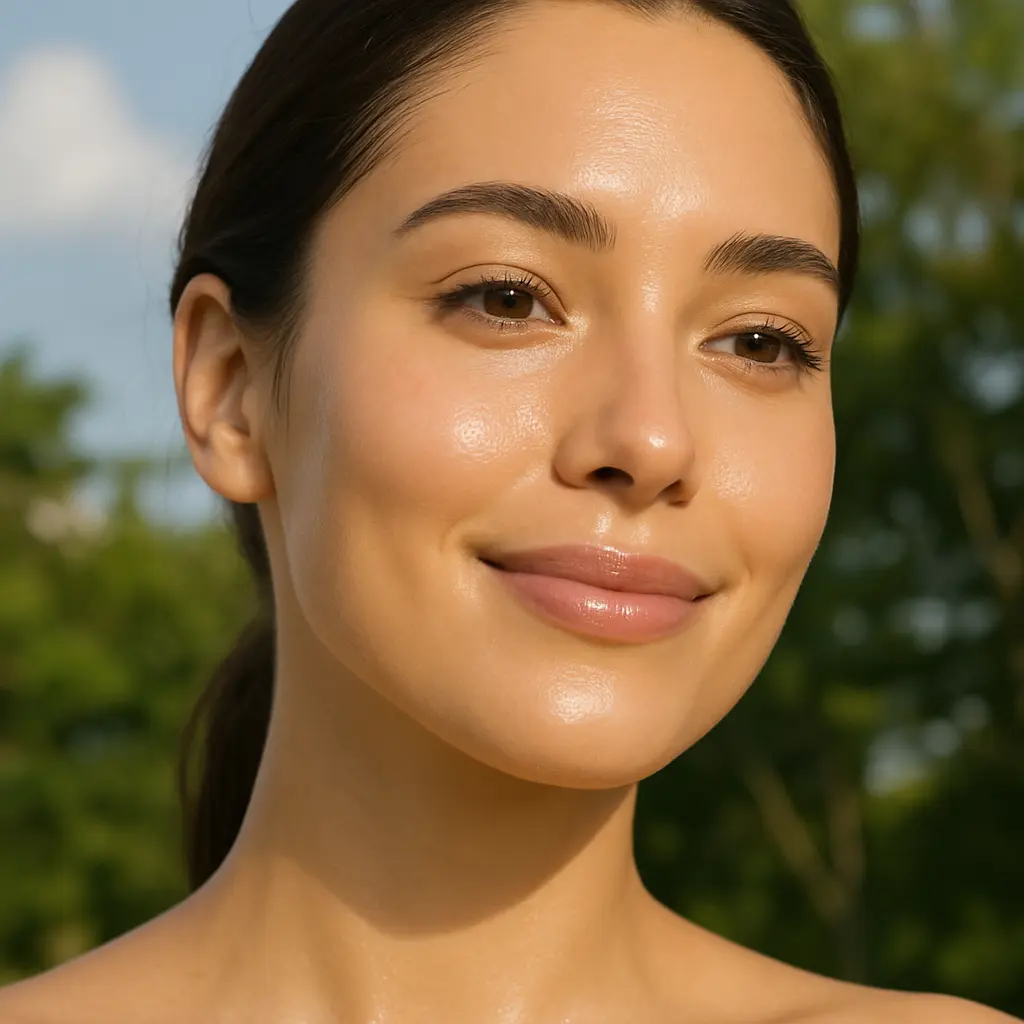
Sustainability and Brand Ethics
| Factor | CeraVe | La Roche-Posay |
|---|---|---|
| Cruelty-Free | ❌ No (sold in mainland China) | ❌ No (sold in China) |
| Vegan Options | Some products | Limited info |
| Packaging | Mostly recyclable | Recyclable, but with some single-use plastics |
| Dermatologist Tested | ✅ Yes | ✅ Yes |
| Availability | Widely available in drugstores | Premium stores + online only |
Neither brand is fully cruelty-free, which may be a concern for ethical shoppers.
Final Verdict: Which One Should You Choose?
Both products offer excellent performance — but the right pick depends on your priorities.
Choose CeraVe AM if you:
- Want SPF protection + hydration in one step
- Prefer fragrance-free formulas
- Are on a budget and want a dermatologist-approved moisturizer
Choose La Roche-Posay Effaclar Mat if you:
- Need long-lasting shine control
- Struggle with clogged pores, large pores, or acne
- Use a separate sunscreen and want a strong base for makeup
Final Thoughts: The Best Moisturizer for Oily Skin in Summer 2025
Dealing with oily skin in summer doesn’t have to feel overwhelming. The secret to controlling shine, preventing summer breakouts, and maintaining a healthy complexion lies in choosing the right moisturizer for oily skin — one that balances hydration, oil control, and sun protection.
Both CeraVe AM Facial Moisturizing Lotion with SPF 30 and La Roche-Posay Effaclar Mat Daily Moisturizer are top choices for acne-prone, oily skin types in hot and humid weather:
- CeraVe AM offers lightweight hydration plus SPF, making it perfect for everyday morning use without clogging pores. It strengthens the skin barrier while protecting from harmful UV rays.
- La Roche-Posay Effaclar Mat provides exceptional shine control and works beautifully as a makeup primer for oily skin, especially when battling humidity and sweat.
If you’re struggling with greasy skin, clogged pores, or makeup sliding off, investing in the right moisturizer can transform your skin and boost your confidence.
Some people even choose to combine both products: using Effaclar Mat on the T-zone for oil control and CeraVe on drier areas for moisture and sun protection.
👉 Key Takeaway: Whether your main goal is oil-free skin, SPF protection, or acne prevention, these two dermatologist-recommended moisturizers can help you achieve shine-free, healthy skin this summer 2025—without sacrificing comfort or hydration.
Your skin deserves balance. With the right skincare, you can finally say goodbye to unwanted shine and hello to fresh, radiant skin all season long.
Also Read:
What Are the Best Moisturizers for Oily Skin?
Hydration vs. Moisture: What’s the Difference?
Best Lightweight Sunscreens for Summer 2025
For more in-depth information, you can visit trusted skincare sources like Healthline.com, and Skincare.com.



